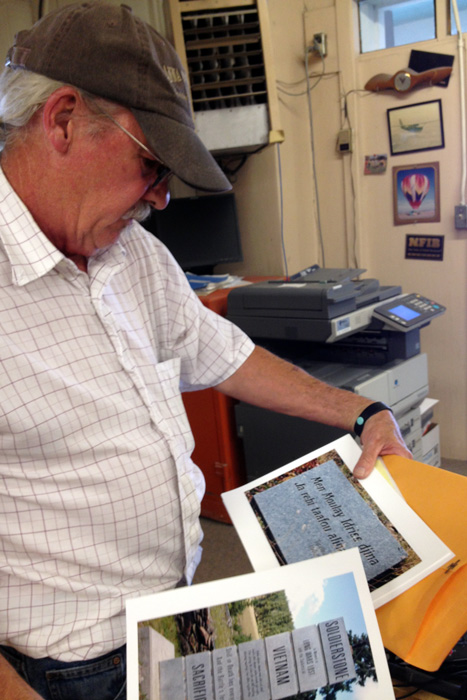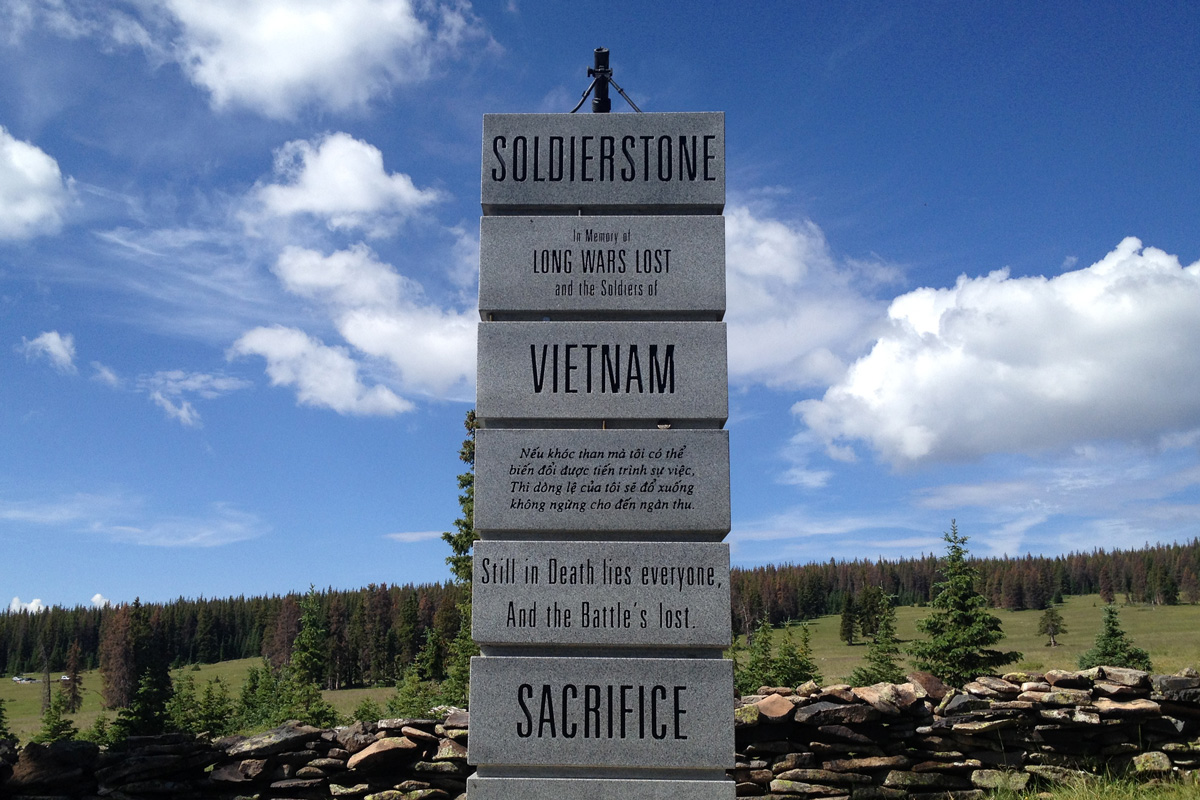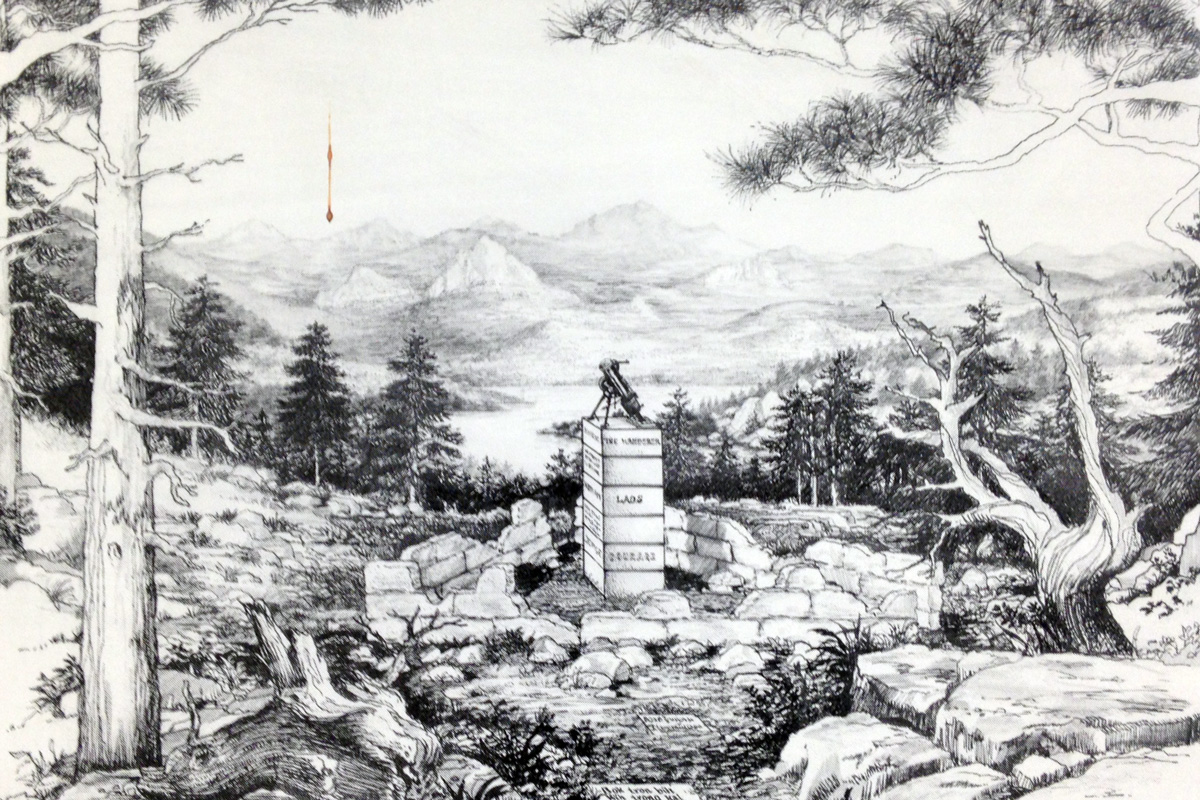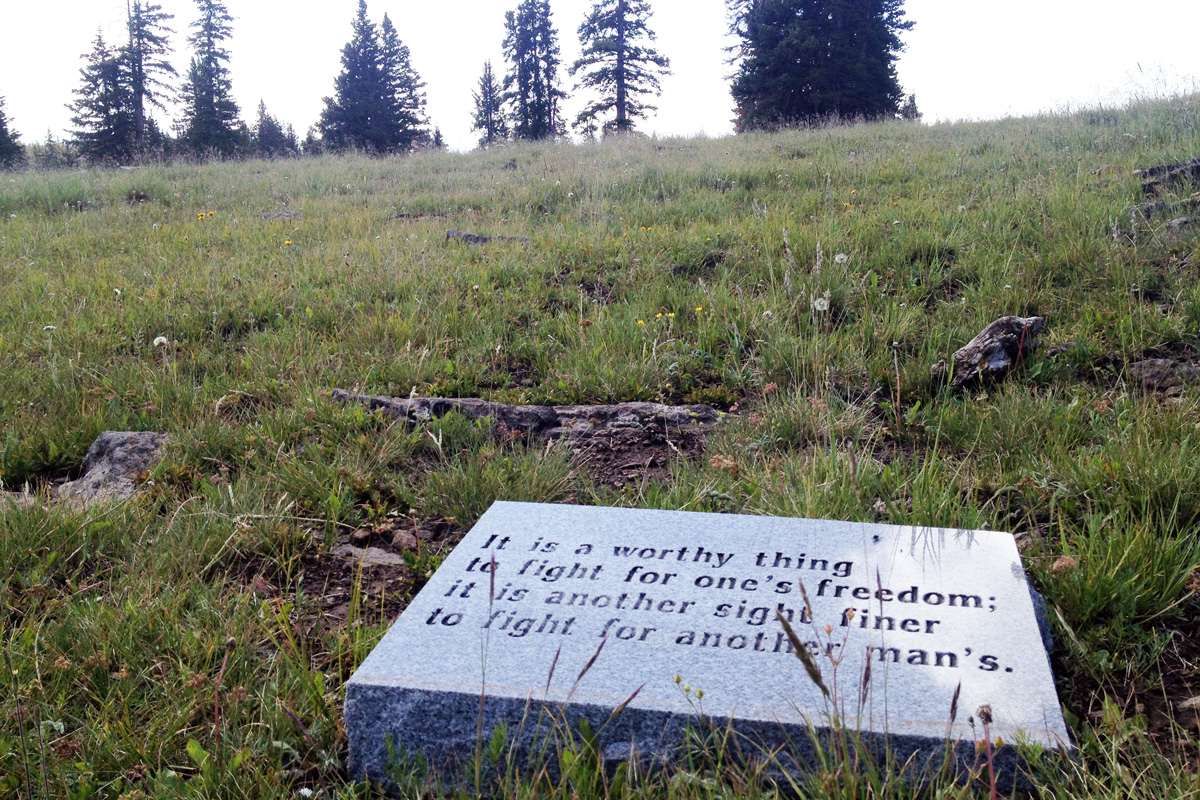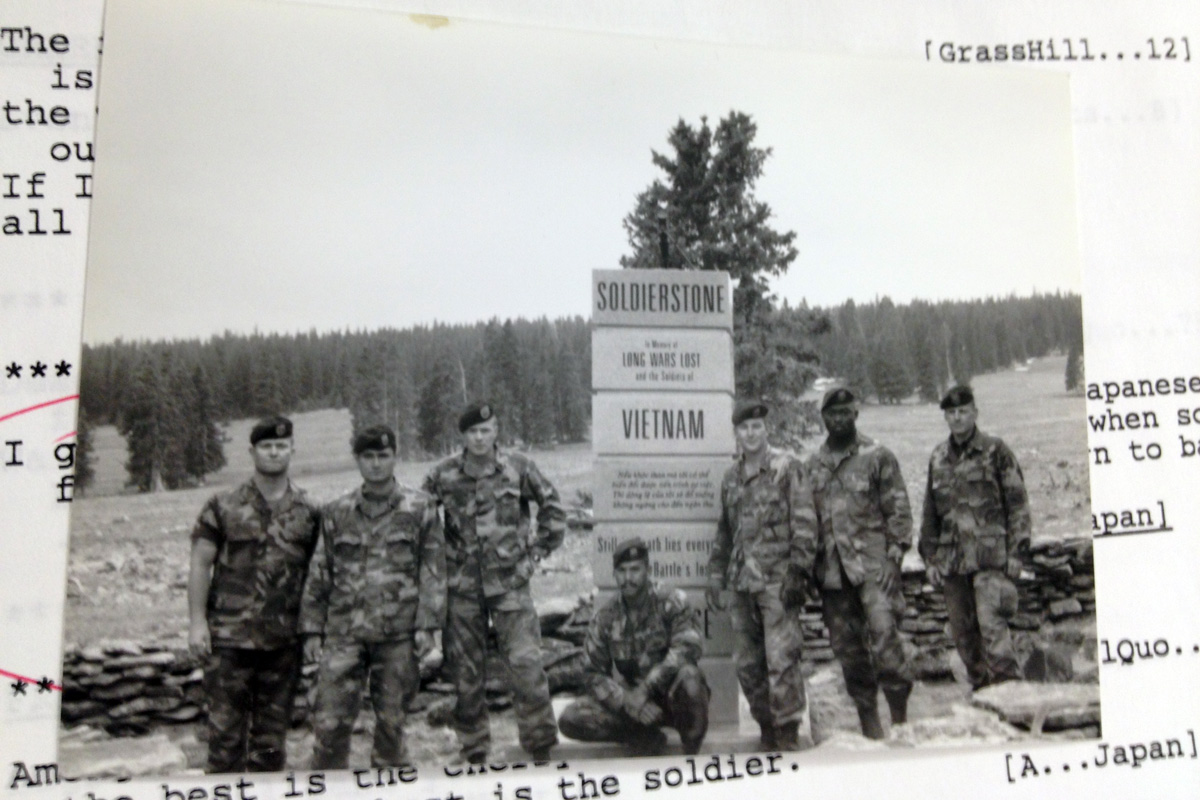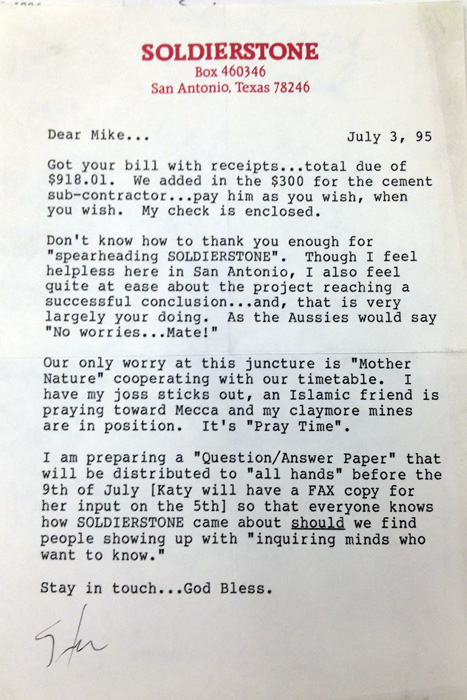I.
The path to Soldierstone - thousands of pounds of engraved granite hidden in a stand of trees near the Continental Divide - is a straight 100-foot shot from a secluded dirt parking lot. From the nearby Colorado Trail, it's two-fifths of a mile. And yet until 2014, few visitors to the remote part of the Rio Grande National Forest were aware of it.
Even now, when many go out of their way to visit the 19-year-old memorial, few know what to make of the towering stone rectangle surrounded by a thigh-high stone parapet. Dispersed about 50 yards from the central marker are 36 300-pound quote stones etched in French, Laotian, Thai, Vietnamese, and Arabic among other languages.
"It does seem pretty remote and almost inaccessible," observed Eben Yonnetti, a Colorado Trail hiker visiting the site. "It does make you wonder about the purpose of such a monument and if it's even meant to be seen. Or if it's just meant to be stumbled across and have people scratch their heads at it."

Grace Hood/KUNC
It does seem that way.
The U.S. Forest Service has posted no online information about the site. There are no interpretive signs. A visit to the nearest ranger station will yield verbal directions on how to get there, plus a paper booklet with bold letters reading "Not intended for display or wide distribution."
The lack of an official story surrounding Soldierstone has launched a rumor mill. Some say the marker is illegally on U.S. Forest Service land. Others, curious about how it got built, have concluded that only a helicopter could move such large stones to such remote territory.
"Some people say 'Well, it's hidden or it's secret.' Well, that really wasn't the case," said Mike Blakeman, a spokesman for the U.S. Forest Service Office. "We just weren't actively promoting it."
The history of America's war memorials on public lands is one of process and input. There are committees, and sometimes subcommittees reviewing the work of committees.
So why exactly was a public memorial built on public land kept private?
The answer comes from understanding the veteran who spent years and tens of thousands of his own dollars building Soldierstone: Stuart Allen Beckley.
